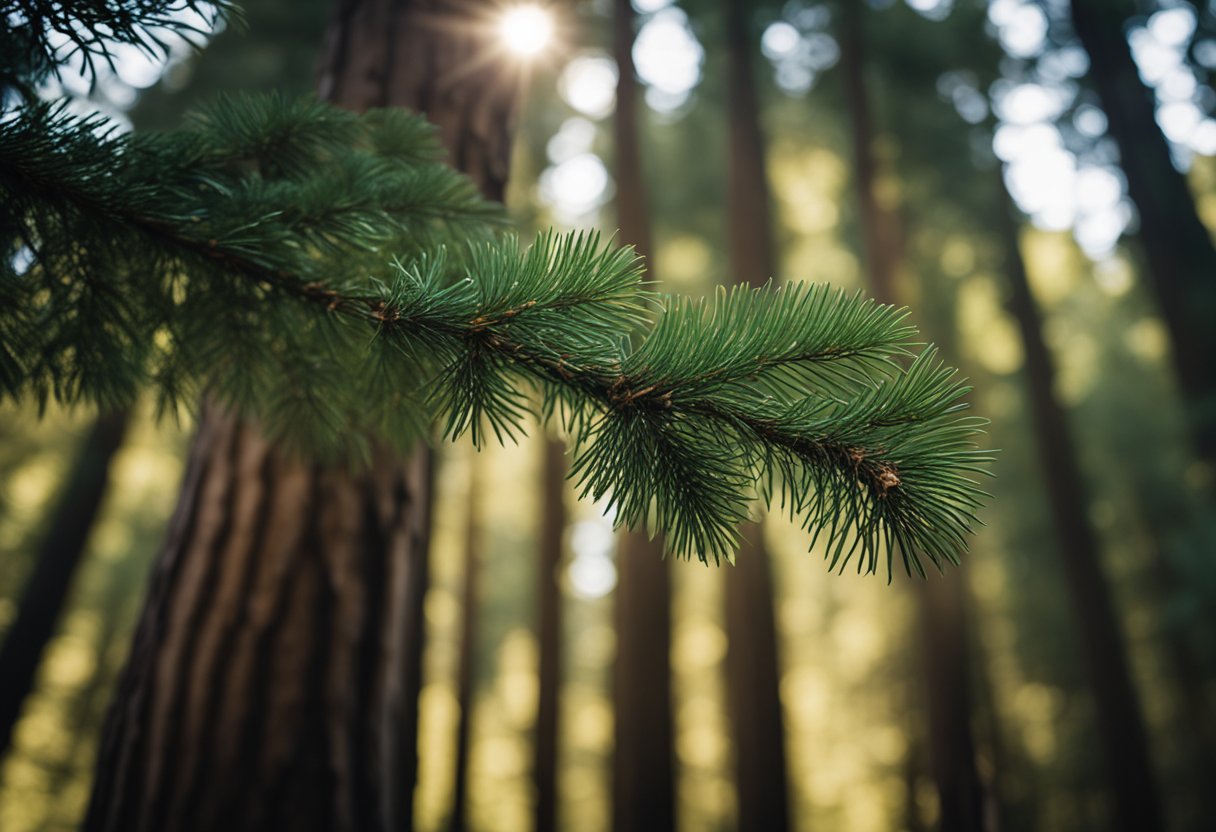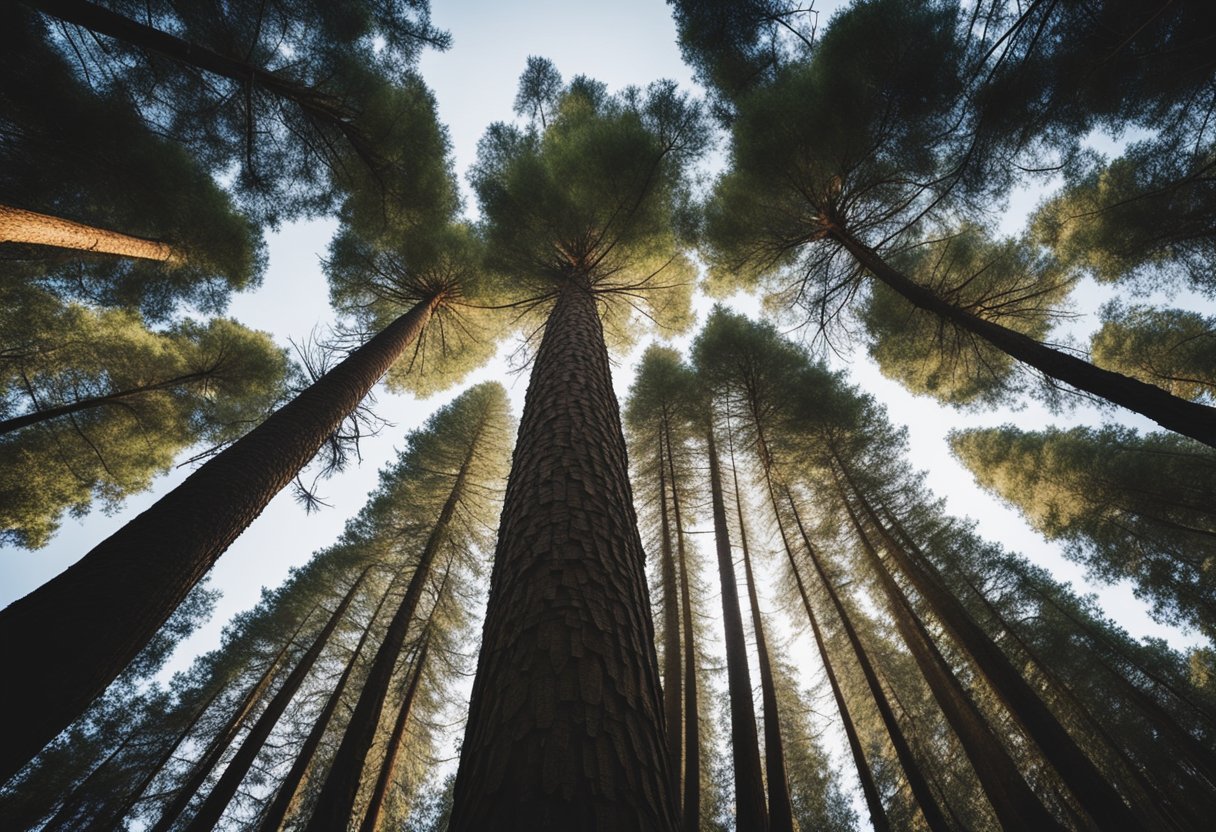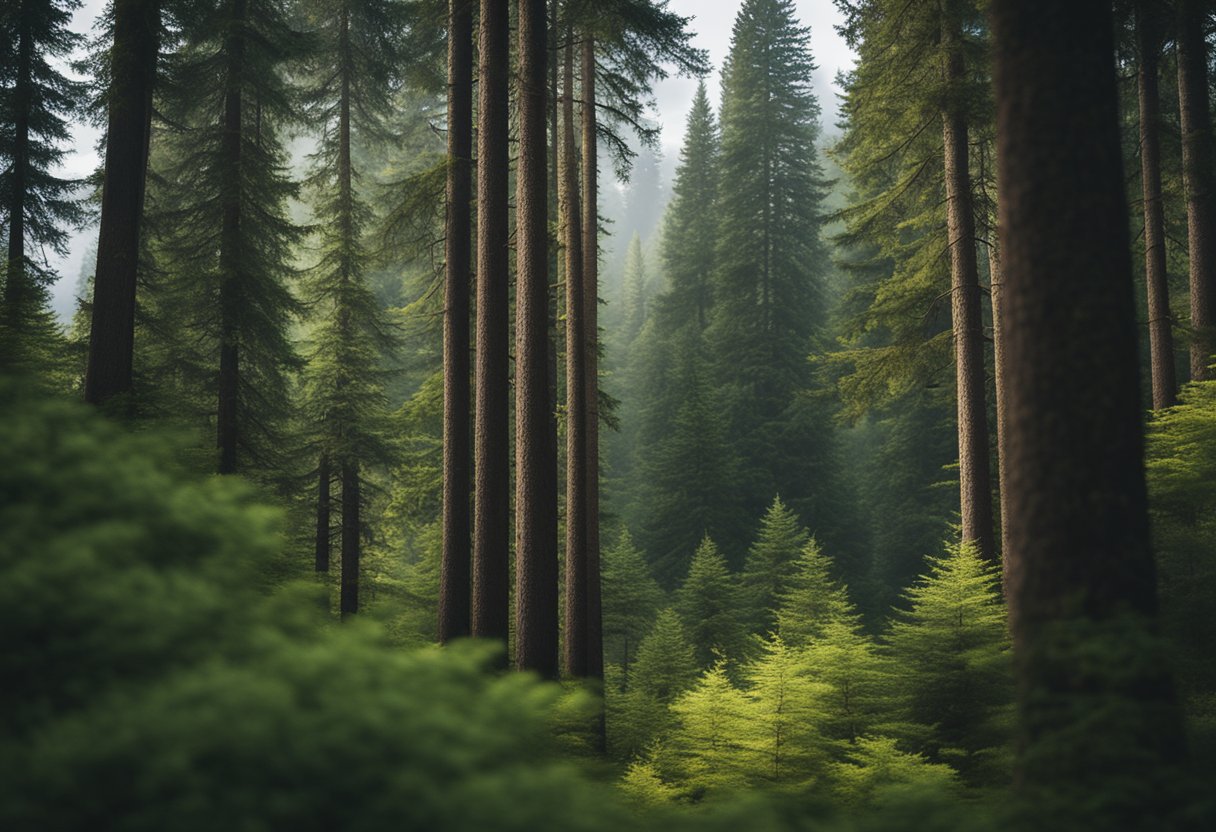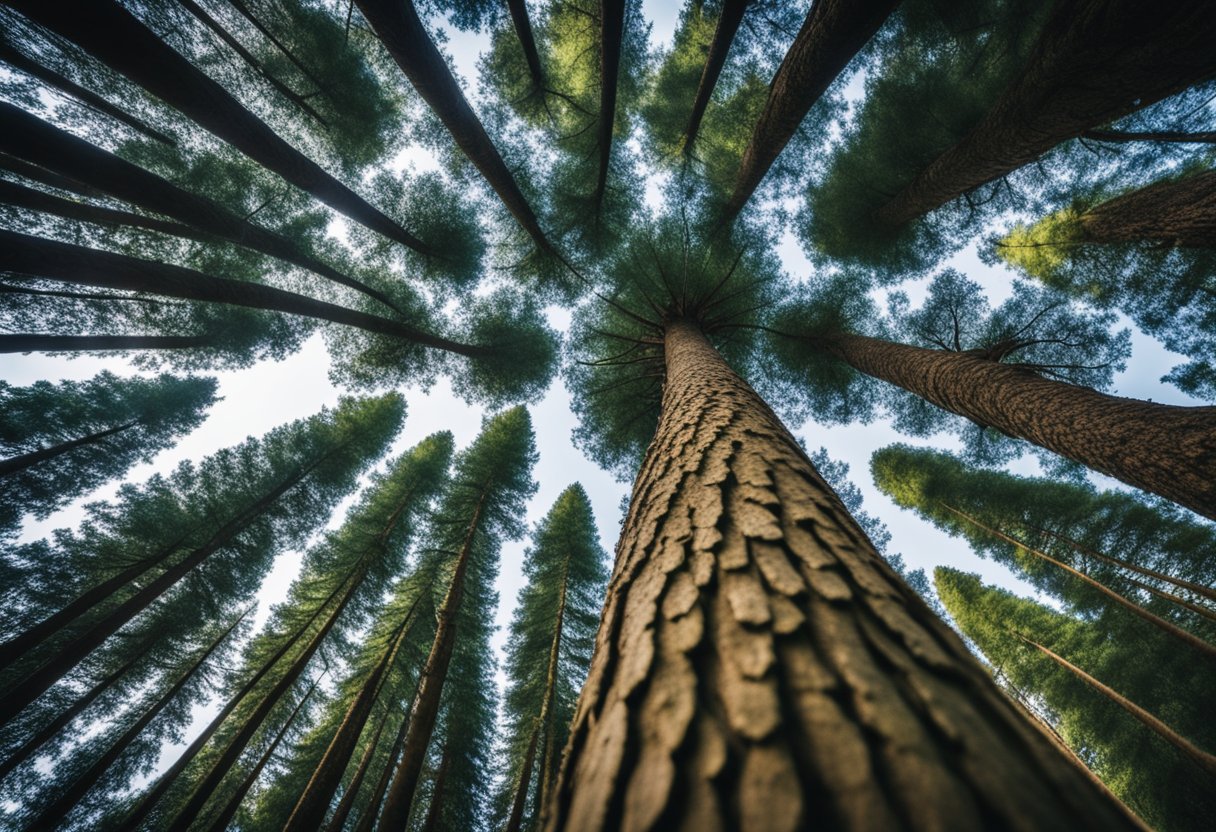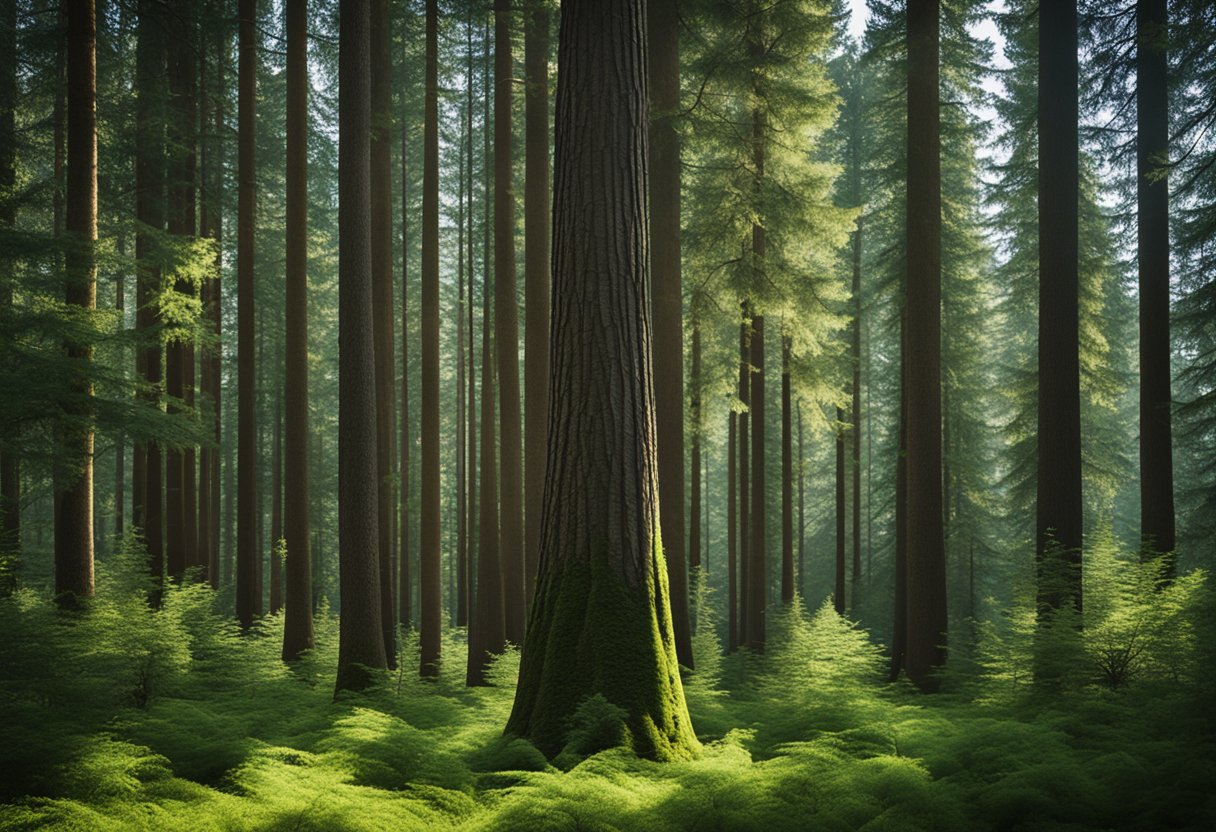I have researched and gathered information about the question “Is Douglas Fir Rot Resistant?” Douglas fir is a popular choice for construction projects, and it is known for its strength and structural capabilities. However, when it comes to selecting the right type of wood, durability becomes a significant concern. Understanding the properties of Douglas fir is essential to determine if it is a suitable material for your project.
Douglas fir is a species of tree that is native to Western North America. It is one of the most commonly used woods for construction in the region. It is a softwood that has a coarse texture and straight grain, which makes it easy to work with. It is also known for its strength, stiffness, and durability. However, the question remains: is Douglas fir rot resistant? Let’s explore this question in more detail.
Key Takeaways
- Douglas fir is naturally resistant to rot, which makes it suitable for outdoor use, like building fences and decking.
- Douglas fir is moderately durable and rot-resistant, but it is susceptible to insect attack.
- Its workability and clean lines make it ideal for ornamental use, while its density makes it difficult to treat.
Understanding Douglas Fir
As a coniferous tree, Douglas Fir (Pseudotsuga menziesii) is native to the Pacific Northwest region of North America. The tree was named after David Douglas, a Scottish botanist who first documented it during his explorations of the region in the 19th century. It was later named after Archibald Menzies, a Scottish physician and naturalist, who also studied the tree.
Douglas Fir is a tall, evergreen tree that can grow up to 330 feet tall. It has a cone-shaped crown with branches that grow horizontally. The tree’s cones are unique in that they have a distinctive three-pointed bract that protrudes from each scale. These cones can be up to 4 inches long and contain many seeds.
The tree’s wood is known for its strength and durability, making it a popular choice for construction. Douglas Fir is commonly used for framing, flooring, and furniture. The wood is also used for decorative purposes due to its attractive grain patterns and warm color.
Douglas Fir is found throughout the Pacific Northwest, from southern Alaska to California, and is divided into two subspecies: Coastal Douglas-Fir and Rocky Mountain Douglas Fir. Coastal Douglas-Fir is found along the coast and in the valleys of western North America, while Rocky Mountain Douglas Fir is found in the Rocky Mountains.
While Douglas Fir is moderately durable and rot-resistant, it is susceptible to insect attack. Its heartwood is rated to be moderately durable in regard to decay, but its sapwood is not resistant to decay. Therefore, it is important to properly treat and maintain Douglas Fir wood to ensure its longevity.
Growth and Habitat
Douglas Fir is a coniferous member of the pine tree family and is predominantly grown in western North America. It is one of the most popular woods used for construction projects because of its strength and durability. The tree is known for its ability to withstand shock and impact loads.
Douglas Fir grows best in moist, well-drained soils with a pH range of 4.5 to 6.5. It can tolerate a wide range of soil types, including mineral soil, but it prefers deep, well-drained soils. The tree is commonly found at elevations between 1000 to 7000 feet above sea level, and it can grow up to 330 feet tall in optimal conditions.
The tree grows in a variety of climates, from the coast ranges to the Sierra Nevada and Rocky Mountains. It can grow at latitudes ranging from 32° to 49° north, and it is known to thrive in areas with cool summers and mild winters. Douglas Fir typically germinates in the spring and fall, and it can be planted in the Klamath region.
Douglas Fir requires adequate moisture to grow, but it can tolerate periods of drought once it is established. The tree benefits from nutrient-rich soils, and thinning can help promote healthy growth. Overall, Douglas Fir is a hardy, fast-growing tree that is well-suited for a variety of habitats and climates.
Douglas Fir and Other Tree Species
As a homeowner, I have always been interested in the durability and resistance of various tree species to rot and decay. In my experience, Douglas fir is one of the most rot-resistant tree species available. However, it is important to note that not all tree species are created equal when it comes to rot resistance.
Cedar and yellow cedar are also known for their excellent rot resistance, and are often used for outdoor projects such as decking and fencing. Strong and western larch are also good options, while ponderosa pine and white fir are less resistant to rot.
When it comes to hardwoods, maple and alder are relatively rot-resistant, while tanoak is less so. It is important to note that the rot resistance of a tree species can vary depending on the specific conditions it is exposed to.
In addition to Douglas fir, incense-cedar and mountain hemlock are also commonly used for outdoor projects. However, it is important to keep in mind that no tree species is completely immune to rot and decay, and proper maintenance and care is essential to ensuring the longevity of any outdoor project.
Overall, when selecting a tree species for an outdoor project, it is important to consider the specific conditions the wood will be exposed to, as well as the desired aesthetic and durability. By considering these factors and selecting a rot-resistant tree species, homeowners can ensure that their outdoor projects will stand the test of time.
Resistance to Decay and Damage
https://www.youtube.com/watch?v=XG6ked9ytOc&embed=true
As a professional in the wood industry, I can confidently say that Douglas Fir is moderately durable when it comes to decay resistance, but it is susceptible to insect attack. The heartwood of Douglas Fir is rated to be moderately durable in regard to decay, but fungal disease and insects can still cause damage to the wood.
Moisture is a primary culprit in wood rot, as it creates an ideal environment for fungi growth. If the wood is exposed to excessive moisture or prolonged periods of dampness, it can compromise its resistance and lead to rot. However, Douglas Fir is naturally resistant to rot, which makes it suitable for outdoor use, like building fences and decking, while its workability and clean lines make it ideal for ornamental use.
Butt rot, root rot, and laminated root rot are some of the most common fungal diseases that can affect Douglas Fir. These diseases can cause decay and damage to the wood, making it less stable and more susceptible to insect attack. However, if the wood is treated properly and maintained well, it can last for many years without any significant damage.
Insects such as termites, carpenter ants, and beetles can also cause damage to Douglas Fir. These insects can bore into the wood and cause structural damage, making the wood less stable. However, Douglas Fir is naturally resistant to insects, which makes it a good choice for outdoor use.
In conclusion, Douglas Fir is moderately durable in regard to decay resistance and susceptible to insect attack. It is naturally resistant to rot and insects, but fungal diseases can still cause damage to the wood. Proper treatment and maintenance can help prolong the life of Douglas Fir, making it a good choice for outdoor and ornamental use.
Douglas Fir in Construction
https://www.youtube.com/watch?v=a4itfjpmrCk&embed=true
As a softwood, Douglas Fir is a popular choice for construction purposes. Its strength and stiffness make it a suitable material for structural framing, while its workability allows for easy cutting and shaping.
Douglas Fir is also known for its durability and resistance to rot. Its heartwood, which is red and distinct from the sapwood, is particularly resistant to decay, making it ideal for outdoor use in decking, fencing, and other applications.
Old growth Douglas Fir, which is harvested from mature trees, is highly sought after for its superior strength and stiffness. It is often used for flooring, veneer, and plywood, although it can be more expensive due to its scarcity.
Despite its many benefits, the high density of Douglas Fir can make it difficult to treat with preservatives, which can increase its durability even further. This can also contribute to its higher cost compared to other softwoods.
Overall, Douglas Fir is a versatile and reliable material for construction purposes, particularly in applications where strength and durability are important factors.
Visual Characteristics of Douglas Fir
As a softwood, Douglas Fir has a distinct appearance that sets it apart from other types of wood. Its color ranges from reddish-brown to yellow, with a light brown hue being the most common. The wood’s annual rings are clearly visible, giving it a unique texture and character.
In terms of foliage, Douglas Fir has needles that are about an inch long and grow in a spiral pattern around the branches. The needles are typically a blue-green color and have a sweet fragrance.
One of the most notable visual characteristics of Douglas Fir is its resin. The wood contains a significant amount of resin, which gives it a distinctive smell and a natural resistance to decay and insects. The resin can also cause the wood to stain, so it’s important to take care when handling and finishing it.
Overall, Douglas Fir is a beautiful and unique softwood that offers a range of visual characteristics. Its distinct color, visible annual rings, and fragrant foliage make it a popular choice for a variety of woodworking projects.
Douglas Fir in Global Forestry
As a softwood tree that prefers cool-weather climates, Douglas Fir is a valuable timber tree that has been a major component of the forests of western North America since the mid-Pleistocene [1]. It is commonly found in USDA zones 5-6, although a variety called the Rocky Mountain Douglas Fir will also thrive in zone 4. The Douglas Fir grows along the Pacific Northwest with a range from British Columbia to Mexico [2].
Douglas Fir is an important species in the forestry industry and is widely used in construction, furniture, and paper production. Its wood is highly valued for its strength, durability, and natural resistance to decay, making it an ideal choice for outdoor projects such as decks, fences, and siding [1].
In Europe, Douglas Fir is grown primarily for forestry purposes, and it is also a popular tree in New Zealand, where it is used for timber and forestry [3]. In British Columbia, Douglas Fir is one of the most common tree species, and it is used for a wide range of products, from lumber to pulp and paper [2].
Despite its many uses, Douglas Fir is not immune to decline and disease. In recent years, there has been a decline in the health of Douglas Fir forests due to factors such as climate change, insect infestations, and disease outbreaks [4].
Overall, Douglas Fir is a valuable species in global forestry, and its natural resistance to decay makes it a popular choice for a wide range of products. However, like all species, it is vulnerable to decline and disease, and it is important to manage Douglas Fir forests carefully to ensure their long-term health and sustainability.
[1] https://www.srs.fs.usda.gov/pubs/misc/ag_654/volume_1/pseudotsuga/menziesii.htm
[3] https://www.forestry.gov.nz/trees/tree-species/douglas-fir
[4] https://www.sciencedirect.com/science/article/pii/S0378112719302228
Frequently Asked Questions
Is Douglas fir naturally resistant to rot?
Douglas fir heartwood is moderately durable in regard to decay, but it is susceptible to insect attack according to The Wood Database. The durability of the wood can be improved by treating it with preservatives.
How does Douglas fir compare to other naturally rot-resistant woods?
Compared to other naturally rot-resistant woods such as cedar and redwood, Douglas fir is less resistant to rot. However, it is still a popular choice for construction projects due to its strength and durability.
What are the characteristics of Douglas fir wood?
Douglas fir is a softwood with excellent strength and versatility. It is predominantly grown in western North America and is one of the most popular woods used for construction projects. It machines well, accepts stains, glues, and finishes well, and has a distinct, resinous odor when being worked.
Is Douglas fir suitable for outdoor furniture?
Douglas fir is suitable for outdoor furniture, but it is important to note that it is not naturally rot-resistant. To improve its durability, it is recommended to treat it with preservatives or use a protective finish.
How long can Douglas fir last outdoors?
The lifespan of Douglas fir outdoors depends on various factors such as the climate, location, and treatment of the wood. With proper treatment and maintenance, it can last for several years.
What are the potential drawbacks of using Douglas fir for outdoor projects?
One potential drawback of using Douglas fir for outdoor projects is its susceptibility to rot and insect attack. It is also not as naturally rot-resistant as other woods such as cedar and redwood. Additionally, it can be more prone to splitting and warping than other woods.

Hi, I’m Sal Muller of Tooltrip.com. My DIY experience led me to understand essential power tools for home projects. Tooltrip.com guides enthusiasts and professionals in choosing right tools for any job. I provide concise top tool reviews for easier, efficient DIY.

